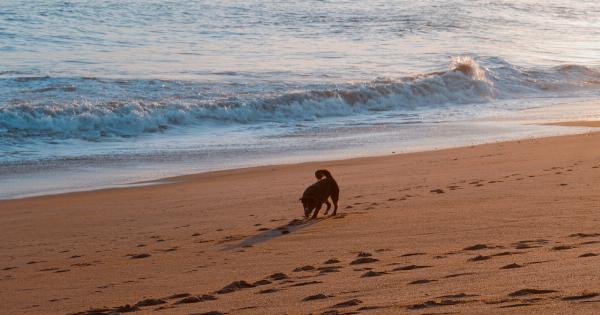Summer is a fun time for both you and your furry friend. But while you enjoy the warm weather and outdoor adventures, it’s crucial to remember that summer can pose several risks to your dog’s health and safety.
Here are the top five dangers that put your dog at risk during the summer and how to protect them:.
Danger 1: Heatstroke
Heatstroke is one of the most common risks that dogs face during the summer months. Dogs are particularly susceptible because they can’t sweat like humans do. Instead, they release heat by panting, which is less effective in extreme heat.
This can lead to dehydration, heat exhaustion, and even heatstroke.
Signs of heatstroke in dogs include excessive panting, drooling, reddened gums, vomiting, and collapse. If you suspect your dog is suffering from heatstroke, move them to a cool, shaded area and offer water.
Use a cool towel or ice packs to bring their temperature down, but do not use ice water or immerse the dog in cold water, as this can send them into shock. Call your vet immediately for further guidance and treatment.
The best way to protect your dog from heatstroke is to limit their time outside during periods of extreme heat and humidity. Provide plenty of fresh water and shade, and never leave your dog in a hot car.
Danger 2: Parasites
Summer is peak season for parasites like fleas, ticks, and mosquitos. These pests not only make your dog uncomfortable but can also transmit dangerous diseases like Lyme disease and heartworm.
Protect your dog by using flea and tick preventatives and keeping them up to date on heartworm medication. Check your dog regularly for ticks, and invest in a good quality mosquito repellent for dogs if you live in an area with high mosquito activity.
Danger 3: Poisonous Plants
Summer is the time when many plants come into bloom, but some of these can be toxic to your dog. Common plants toxic to dogs include lilies, azaleas, oleander, and sago palms.
Symptoms of plant poisoning in dogs can include vomiting, diarrhea, abdominal pain, drooling, and difficulty breathing.
The best way to protect your dog from poisonous plants is to keep them out of reach. If you have these plants in your garden, fence them off or keep your dog away with a physical barrier.
If you suspect your dog has ingested a poisonous plant, call your vet or an animal poison helpline immediately.
Danger 4: Beach Hazards
Beach trips are a summer favourite for many dog owners, but there are several hazards to keep in mind. Saltwater can be dangerous for dogs if ingested in large quantities, as it can cause dehydration and electrolyte imbalances.
Dogs can also suffer from heatstroke on the beach, and sunburn is a concern for dogs with light-coloured or thin fur. Finally, waves and strong currents can pose a risk to poorly swimmers.
To protect your dog at the beach, bring plenty of fresh water and offer it to your dog regularly. Provide shade with a beach umbrella or tent, and apply a dog-friendly sunscreen to your dog’s nose, ears, and other exposed areas.
If your dog is a poor swimmer, consider using a dog life jacket, and never let your dog swim in rough surf.
Danger 5: Asphalt and Concrete
Asphalt and concrete can reach extremely high temperatures during the summer, which can burn your dog’s paw pads. This can cause pain, lameness, and even blistering.
To protect your dog’s paws, avoid walking them on hot surfaces during the hottest parts of the day. Instead, opt for early morning or late evening walks when surfaces are cooler. Alternatively, invest in some protective dog boots to shield their paws from the heat.
Summer can be a time of fun and adventure with your dog, but it’s important to remain vigilant about potential risks. By educating yourself about the dangers facing your dog, you can help to keep them healthy, happy, and safe all summer long.






























